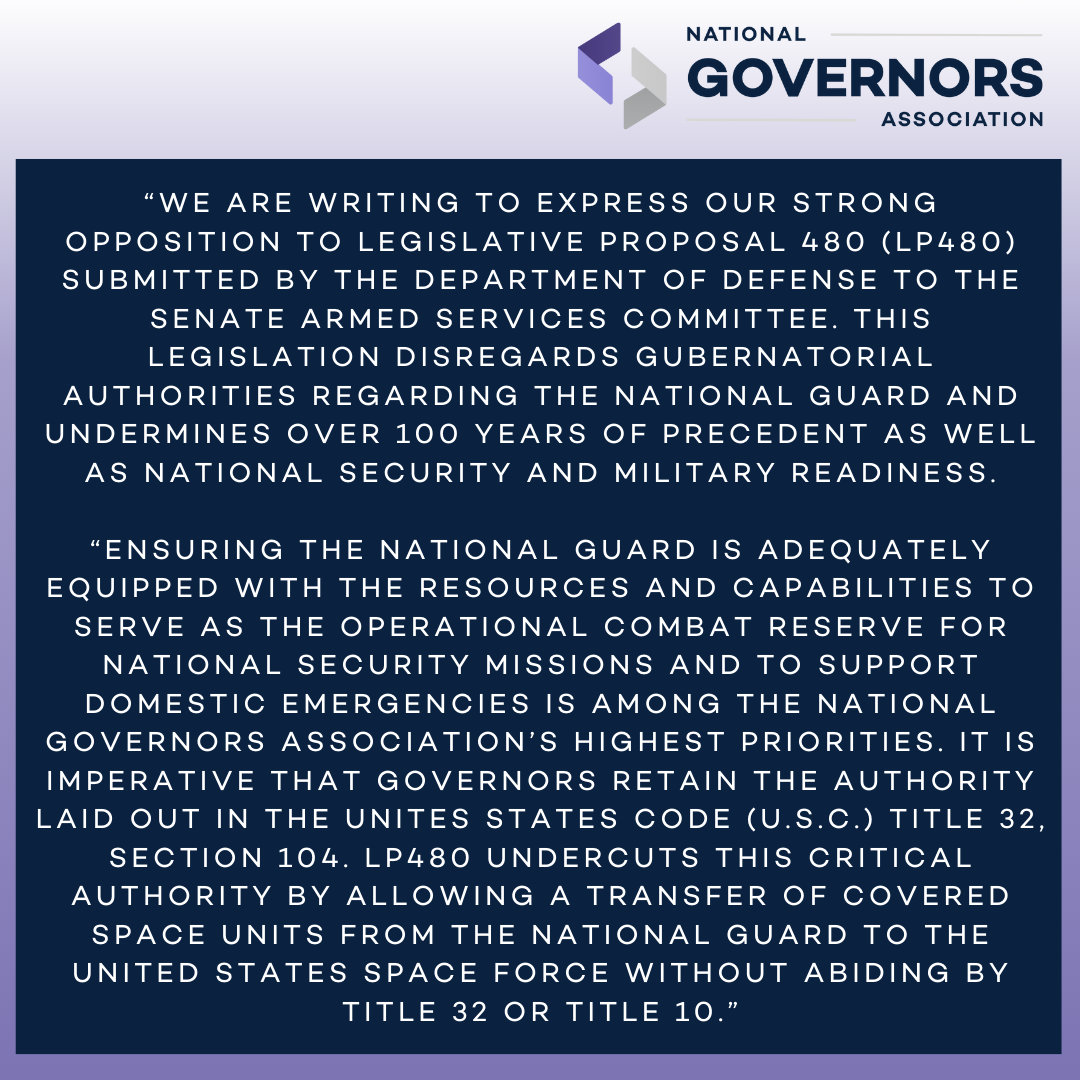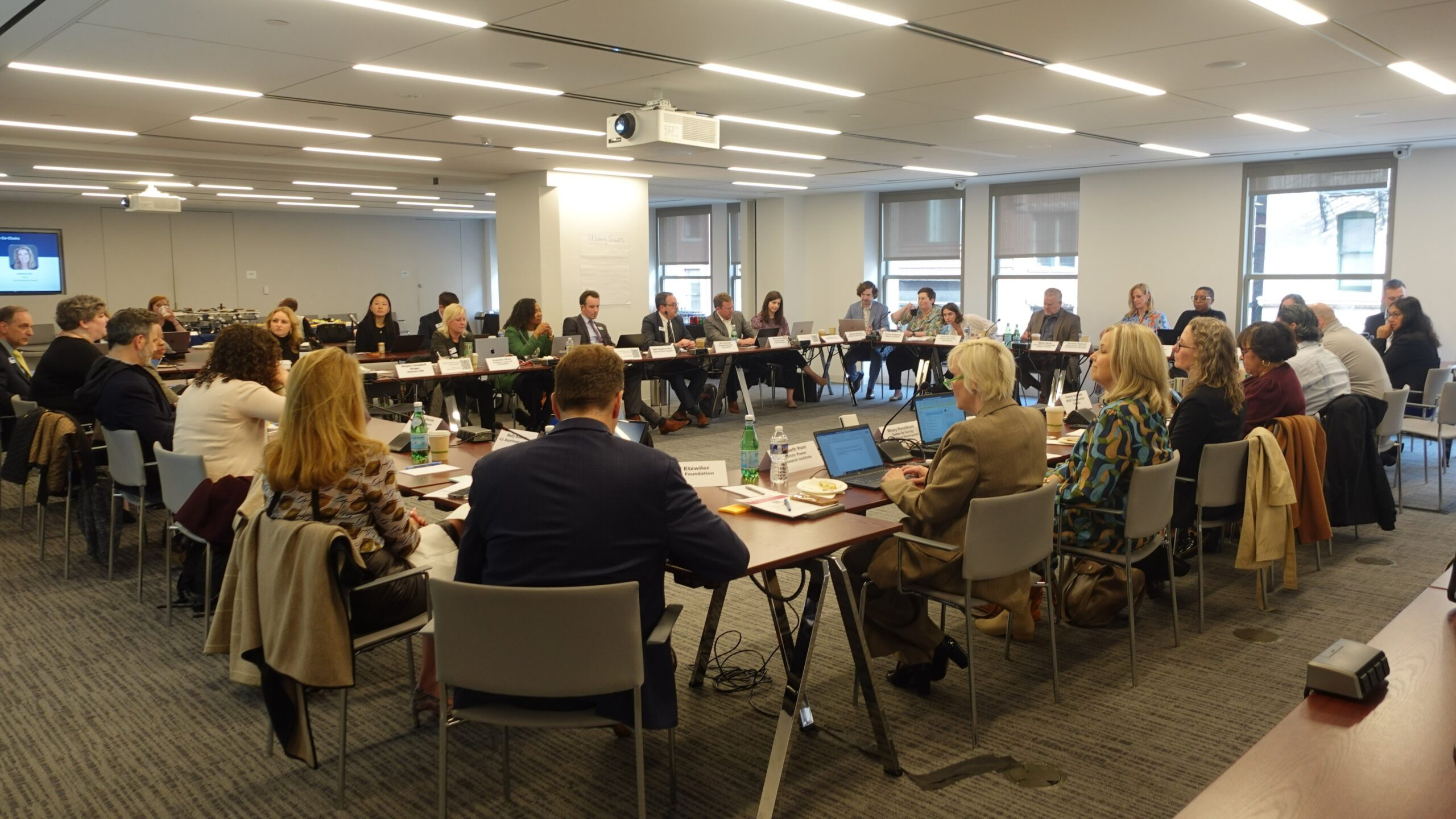STATEMENT FOR THE RECORD
Mark Ghilarducci
Director, California Governor’s Office of Emergency Services
On behalf of The National Governors Association and the Governors Homeland Security Advisors Council
Submitted to the House Committee on Homeland Security
Subcommittee on Emergency Preparedness, Response and Communications
United States House of Representatives
Assessing the Nation’s State of Preparedness: A Federal, State, and Local Perspective
Thank you Chairman Brooks, Ranking Member Payne, and members of the Subcommittee for holding this hearing. My name is Mark Ghilarducci. I am Director of the California Governor’s Office of Emergency Services and the Homeland Security Advisor to Governor Edmond G. Brown Jr.
It is my privilege to appear on behalf of both the National Governors Association (NGA) and the Governors Homeland Security Advisors Council (GHSAC), which represents governors’ homeland security advisors of the 55 states, territories and commonwealths as well as the District of Columbia. Governors and their homeland security advisors appreciate the opportunity to appear before you to provide the state perspective in this important dialogue about national preparedness and intergovernmental engagement.
A “WHOLE COMMUNITY” APPROACH HAS BEEN KEY TO PREPAREDNESS
Governors are committed to leading statewide efforts to build and sustain the capabilities required to meet local needs and address national homeland security priorities. The National Preparedness Reports (NPR) of the last two years have made it clear that our nation’s level of preparedness has vastly improved since September 11, 2001. This is the result of not only an increased focus on community preparedness since 9/11 and Hurricane Katrina, but also a decade’s worth of federal investment and engagement at the state and local level.
Intergovernmental and public-private collaboration, effective coordination and enhanced communication are key elements in achieving a “whole community” approach to national preparedness. These concepts have been recently demonstrated in a number of ways, including: the improved preparation and response to Hurricane Sandy; the support provided by state and local fusion centers on numerous successful criminal and terrorism investigations, such as the Boston Marathon bombing; the ongoing implementation of a nationwide public safety broadband network; the use of National Guard dual-status commanders to coordinate state and federal military forces during an emergency; and the development and implementation of the National Preparedness System (NPS).
Unfortunately, our progress could be put at risk by a number of significant, emerging challenges, including:
- a growing number of homeland security threats and hazards facing states and communities such as those related to cybersecurity;
- a suite of federal preparedness grant programs whose structure no longer aligns with the current economic or security environment; and
- a newly established doctrine on national preparedness, which has shown early promise, but needs time and fine-tuning to be truly effective in the long term.
Active federal-state engagement will be critical to addressing these challenges and ensuring that positive trends in our nation’s level of preparedness are not reversed. Neither the federal government nor states can address any of these issues independently. In an era of constrained budgets, all levels of government must do more with less. Unity of effort is no longer an aspiration, but an imperative to meet both the needs of our communities and the National Preparedness Goal of “a more secure and resilient nation.”
ENGAGEMENT IS KEY IN ADDRESSING STATE CYBERSECURITY NEEDS
States and the nation face an expanding range of homeland security threats that have moved beyond the traditional physical domain and now includes cyberspace. In fact, while this year’s updated NPR highlighted forward movement on federal efforts to strengthen its cybersecurity posture in the last year, a majority of State Preparedness Reports (SPR) ranked cybersecurity as one of the weakest core capabilities at the state level.
Governors and their homeland security advisors are aware of the rising cybersecurity risk facing public and private sector entities within their states. Many are actively engaged in efforts to develop threat prevention, remediation, response and recovery strategies to enhance security and improve resiliency against attacks. Because of the speed and evolving nature of this threat, however, states must take full advantage of federal resources and expertise they can leverage to protect state systems and address current gaps in capabilities. Active federal-state engagement will identify additional opportunities to collaborate on strategic planning, coordinate on incident response and share information on potential threats.
To support this need, NGA established the Resource Center for State Cybersecurity (Resource Center), co-chaired by Maryland Governor Martin O’Malley and Michigan Governor Rick Snyder. The Resource Center brings together representatives and experts from key state and federal agencies and the private sector to provide strategic and actionable policy recommendations that governors can adopt to craft and implement effective state cybersecurity policies and practices. Next week here on Capitol Hill, the Resource Center will release A Governors’ Call to Action on State Cybersecurity that will provide five key recommendations governors can implement in the near term to address cybersecurity within their state.
For its part, the federal government can expand its level of engagement with states by improving information sharing; better leveraging state and local fusion centers to share intelligence information and mitigate cyber threats; assisting with cyber incident response planning; and working through the Council of Governors to build and enhance the role of the National Guard to support state cybersecurity needs. As states seek to make investments to build cybersecurity capabilities, they also need the flexibility to prioritize federal grant funding for such uses – an option not fully available today.
FEDERAL GRANTS CAN BETTER ALIGN WITH PREPAREDNESS PLANNING
In the last decade, federal, state and local governments have invested billions to strengthen homeland security and emergency preparedness. States continue using homeland security grant funds to develop and sustain core capabilities such as intelligence fusion centers, statewide interoperable communications, specialized response teams and citizen preparedness programs.
While the number of threats and hazards facing states and the nation has increased, federal support for state and local preparedness efforts has steadily decreased. Federal, non-disaster preparedness grant funding has dropped 75 percent since 2003. This reduction, combined with state and municipal budget challenges, has significantly limited the ability of state and local governments to build new capabilities, sustain prior investments and maintain forward momentum with preparedness efforts.
The NPS and its components are intended to ensure the most effective and efficient use of resources across the preparedness spectrum. While the NPS was established as a framework to better enable states to prioritize projects, the structure of the grant programs themselves has changed very little since their inception. As currently designed, the preparedness grant programs are often duplicative. Statutory restrictions on the use of funds and shortened performance periods reduce states’ flexibility and compound administrative burdens. Grant programs should appropriately align with the NPS to better link federal investments to capability targets and national preparedness objectives. Reform is essential to ensure that limited federal funds go towards priority projects for states and communities, while providing the most value to all taxpayers.
The National Preparedness Grant Program (NPGP) proposed by the Federal Emergency Management Agency (FEMA) is a good first step to addressing many of the challenges with the current suite of grant programs. While not endorsing the NPGP, NGA sent a letter (attached) in May to Chairman Michael McCaul and Ranking Member Bennie Thompson to articulate states’ appreciation of the proposal and calling for comprehensive grant reform. Included with the letter was a set of governors’ principles on grant reform to help inform federal efforts to restructure and streamline these programs. Federal, state and local engagement on grant reform is ongoing, but could be more active. States will continue to work with Congress, FEMA, and their partners at the local level to develop a reform proposal to make preparedness grants more measureable, accountable and flexible to meet the needs of our communities.
IMPLEMENTATION OF THE PREPAREDNESS SYSTEM CAN BE IMPROVED
Post-Hurricane Katrina, the focus of national preparedness efforts was expanded to an all-hazards approach to meet the challenges of both terrorist events and natural disasters. As the list of potential threats and hazards expanded, so too did states’ interpretation of how and where funding and attention should be prioritized. There was no systematic approach to measure the nation’s level of preparedness or the long-term value of the $40 billion federal investment through preparedness grant programs.
A number of statutory and administrative changes have been introduced to address gaps in federal policy and streamline processes including the Post-Katrina Emergency Management Reform Act of 2006 and Presidential Policy Directive 8 (PPD-8) issued in 2011. These reforms attempt to provide a roadmap for all levels of government to assess risk and build capabilities using a whole community approach. Many deliverables required by PPD-8 are still in various stages of development and will likely take years to fully implement. Despite this protracted timetable, establishing a standardized, government-wide planning doctrine for disaster management would be a significant achievement. The NPS is intended to be a collective effort to provide valuable insight into national-level risks and ensure that investments are targeted appropriately. States are doing their part through NPS deliverables such as the State Preparedness Report and the Threat and Hazard Identification and Risk Assessment (THIRA). Through these processes, states are working hard to understand their level of risk to a broad array of threats and the capabilities needed to address them.
Implementing the SPR and THIRA, however, is not without its challenges. Despite FEMA’s efforts to engage with states on their concerns, many problems remain unresolved. States recommend the following steps to improve federal-state engagement on the NPS, streamline planning processes and make the system work in a truly integrated and synchronized manner:
- Existing relationships with state stakeholder groups should be better utilized. In general, the U.S. Department of Homeland Security (DHS) and FEMA should take advantage of existing state associations and councils, such as the GHSAC, to help solicit input and feedback on NPS guidance and programs. As much as FEMA and the federal government are leading these efforts, effective collaboration must go both ways. Innovations at the state level in these areas can better inform the development of federal guidance and operating procedures.
- Federal outreach must happen earlier with more time allotted for feedback. While DHS has reached out to state stakeholders during the development of the NPS and planning frameworks, it has concurrently solicited state, local, tribal, and territorial (SLTT) input on a series of other draft planning documents (including the National Infrastructure Protection Plan). This has made it a challenge for some stakeholders to prioritize feedback requests and provide a timely response under the tight deadlines provided. If DHS seeks meaningful input from SLTT stakeholders, a reasonable amount of time – certainly more than a couple of weeks – must be offered.
- FEMA must connect-the-dots on the NPS. Engagement on specific parts of the NPS such as the THIRA has been adequate. There has been less guidance, however, on how the SPR, THIRA and other parts of the NPS will develop into a cohesive “system” that will meet the National Preparedness Goal. States will be leading efforts to evaluate overall progress and integrate processes into standard operating procedures. FEMA must provide the SLTT community with a better understanding of how NPS processes are integrated to meet objectives and measure performance over time. As new guidance and revised plans are rolled out in the coming months and years, technical assistance and consistent collaboration with state and local partners must remain a priority for DHS.
- The NPS should be given time to mature. Prior to PPD-8 and the NPS, federal processes, policy and grant guidance lacked an integrated framework, consistent methodology or adequate metrics for measuring performance over time. To gain the SLTT community’s continuing support of these efforts, processes and doctrine must remain consistent, deliberate and stable. In many ways, instituting the NPS will require a cultural shift and changes to entrenched bureaucracies. Stability will ensure that new processes and procedures have the opportunity to take root within all levels of government and are fully integrated between all stakeholders as the NPS is designed.
- Elements of the NPS need to be aligned and synchronized. A key objective of the NPS is to ensure that decisions regarding incident management and resource allocation are informed by both national-level priorities and the reciprocal needs of states, local communities and surrounding regions. Recently, regional THIRAs were performed by FEMA Regional Offices before state THIRA’s were complete. For the NPS to be effective and efficient, schedules and deadlines on deliverables should be synchronized and better aligned with state activities. This small but important change will provide senior leadership at all levels with a shared situational awareness about the risks, capabilities, assets and resources that exist across and within jurisdictions.
- Promote shared awareness of regional resources and expand mutual aid capabilities. Knowledge of regional assets and capabilities is critical for state preparedness and response planning. All 50 statesthe District of Columbia, the U.S. Virgin Islands and Puerto Rico are signatory to the Emergency Management Assistance Compact (EMAC). As the recent 2013 NPR indicated, however, many states are not accounting for the resources and assistance available in neighboring states as part of their capabilities assessments. FEMA can provide better coordination through its regional offices to facilitate mutual aid agreements between states and the FEMA regions. In an era of tightened budgets and declining federal grant funding, leveraging resources across jurisdictions is essential to meet both statewide preparedness requirements and national objectives.
STATES ARE PARTNERS IN MEETING PREPAREDNESS GOALS
Per the 2013 NPR, states continue to deal with gaps in several core capabilities including cybersecurity and those that are recovery focused such as housing. As states seek to build these capabilities, sustained collaboration and communication with federal partners will be critical. The NPS is intended to provide an “all-of-nation” approach for building and sustaining a cycle of preparedness activities over time. Significant progress has been made over the last two years to standardize processes and create a common doctrine for disaster planning nationwide. We are clearly still in the “building” phase, however, and more work remains to be done.
Similar to what are now widely accepted procedures for incident command, the NPS will require several years in the field and continued refinement for progress to be made and measured over time. Programs and processes at each level — including preparedness grant programs — must be better aligned and synchronized to permit each part of the NPS to accurately inform the next. This cascading effect will ensure that capabilities are2 prioritized and focused to meet local, state and national needs. Federal engagement must be consistent, deliberate and transparent as new guidance is issued and as stakeholder feedback is acquired.
Governors and the GHSAC stand ready to serve as partners with the federal government and local communities to improve the NPS, reform preparedness grant programs to improve efficiency and build capabilities to address threats across all domains including cyberspace.
Federal Emergency Management Agency, 2013 National Preparedness Report, March 30, 2013, p.ii












